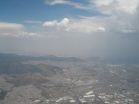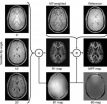UM study finds air pollution harmful to young brains
2014-09-10
(Press-News.org) MISSOULA, Mont. – Pollution in many cities threatens the brain development in children.
Findings by University of Montana Professor Dr. Lilian Calderón-Garcidueñas, MA, MD, Ph.D., and her team of researchers reveal that children living in megacities are at increased risk for brain inflammation and neurodegenerative changes, including Alzheimer's or Parkinson's disease.
Calderón-Garcidueñas' findings are detailed in a paper titled "Air pollution and children: Neural and tight junction antibodies and combustion metals, the role of barrier breakdown and brain immunity in neurodegeneration," which can be found online at http://iospress.metapress.com/content/xx6582688105j48h/?p=6c20479a5ab9446fb981754e7adb36f8&pi=0.
The study found when air particulate matter and their components such as metals are inhaled or swallowed, they pass through damaged barriers, including respiratory, gastrointestinal and the blood-brain barriers and can result in long-lasting harmful effects.
Calderón-Garcidueñas and her team compared 58 serum and cerebrospinal fluid samples from a control group living in a low-pollution city and matched them by age, gender, socioeconomic status, education and education levels achieved by their parents to 81 children living in Mexico City.
The results found that the children living in Mexico City had significantly higher serum and cerebrospinal fluid levels of autoantibodies against key tight-junction and neural proteins, as well as combustion-related metals.
"We asked why a clinically healthy kid is making autoantibodies against their own brain components," Calderón-Garcidueñas said. "That is indicative of damage to barriers that keep antigens and neurotoxins away from the brain. Brain autoantibodies are one of the features in the brains of people who have neuroinflammatory diseases like multiple sclerosis."
The issue is important and relevant for one reason, she explained. The breakdown of the blood-brain barrier and the presence of autoantibodies to important brain proteins will contribute to the neuroinflammation observed in urban children and raises the question of what role air pollution plays in a 400 percent increase of MS cases in Mexico City, making it one of the main diagnoses for neurology referrals.
Calderón-Garcidueñas points out that there is a need for a longitudinal follow-up study to determine if there is a relationship between the cognition deficits and brain MRI alterations previously reported in Mexico City children, and their autoimmune responses. But what is clear is that the kids are suffering from immune dysregulation.
Once there is a breakdown in the blood-brain barrier, not only will particulate matter enter the body but it also opens the door to harmful neurotoxins, bacteria and viruses.
"The barriers are there for a reason," she explains. "They are there to protect you, but once they are broken the expected results are not good."
The results of constant exposure to air pollution and the constant damage to all barriers eventually result in significant consequences later in life. She explains that the autoimmune responses are potentially contributing to the neuroinflammatory and Alzheimer's and Parkinson's pathology they are observing in young urban children.
While the study focused on children living in Mexico City, others living in cities where there are alarming levels of air pollution such as Los Angeles, Philadelphia-Wilmington, New York City, Salt Lake City, Chicago, Tokyo, Mumbai, New Delhi or Shanghai, among others, also face major health risks. In the U.S. alone, 200 million people live in areas where pollutants such as ozone and fine particulate matter exceed the standards.
"Investing in defining the central nervous system pathology associated with exposure to air pollutants in children is of pressing importance for public health," Calderón-Garcidueñas said.
INFORMATION:
The full article is scheduled to be published in Volume 43, Issue 3 of the Journal of Alzheimer's Disease and will appear online at http://www.j-alz.com in December with a 2015 copyright.
The Journal of Alzheimer's Disease is an international multidisciplinary journal to facilitate progress in understanding the etiology, pathogenesis, epidemiology, genetics, behavior, treatment and psychology of Alzheimer's disease. The journal publishes research reports, reviews, short communications, book reviews and letters to the editor.
For more information, call Calderón-Garcidueñas at 406-243-4785 or email lilian.calderon@mso.umt.edu. END
ELSE PRESS RELEASES FROM THIS DATE:
Lady baboons with guy pals live longer
2014-09-10
DURHAM, N.C. –- Numerous studies have linked social interaction to improved health and survival in humans, and new research confirms that the same is true for baboons.
A long-term study of more than 200 wild female baboons from the plains of southern Kenya finds that the most sociable females –- measured by how often they engaged in social grooming relative to their peers -- live two to three years longer than their socially isolated counterparts.
Socializing with males gave females an even bigger longevity boost than socializing with other females, the researchers ...
New study reconstructs mega-earthquakes timeline in Indian Ocean
2014-09-10
MIAMI – A new study on the frequency of past giant earthquakes in the Indian Ocean region shows that Sri Lanka, and much of the Indian Ocean, is affected by large tsunamis at highly variable intervals, from a few hundred to more than one thousand years. The findings suggest that the accumulation of stress in the region could generate as large, or even larger tsunamis than the one that resulted from the 2004 magnitude-9.2 Sumatra earthquake.
Researchers from the University of Miami (UM) Rosenstiel School of Marine and Atmospheric Science and the University of Peradeniya ...
Mystery solved: 'Sailing stones' of Death Valley seen in action for the first time
2014-09-10
Racetrack Playa is home to an enduring Death Valley mystery. Littered across the surface of this dry lake, also called a "playa," are hundreds of rocks – some weighing as much as 320 kilograms (700 pounds) – that seem to have been dragged across the ground, leaving synchronized trails that can stretch for hundreds of meters.
What powerful force could be moving them? Researchers have investigated this question since the 1940s, but no one has seen the process in action – until now.
In a paper published in the journal PLOS ONE on Aug. 27, a team led by Scripps Institution ...
UC San Diego researchers build first 500 GHz photon switch
2014-09-10
The work took nearly four years to complete and it opens a fundamentally new direction in photonics – with far-reaching potential consequences for the control of photons in optical fiber channels.
Researchers at the University of California, San Diego have built the first 500 Gigahertz (GHz) photon switch. "Our switch is more than an order of magnitude faster than any previously published result to date," said UC San Diego electrical and computer engineering professor Stojan Radic. "That exceeds the speed of the fastest lightwave information channels in use today."
According ...
This star cluster is not what it seems
2014-09-10
The Milky Way galaxy is orbited by more than 150 globular star clusters, which are balls of hundreds of thousands of old stars dating back to the formation of the galaxy. One of these, along with several others in the constellation of Sagittarius (The Archer), was found in the late eighteenth century by the French comet hunter Charles Messier and given the designation Messier 54.
For more than two hundred years after its discovery Messier 54 was thought to be similar to the other Milky Way globulars. But in 1994 it was discovered that it was actually associated with a ...
New method to detect prize particle for future quantum computing
2014-09-10
Quantum computing relies on the laws of quantum mechanics to process vast amounts of information and calculations simultaneously, with far more power than current computers. However, development of quantum computers has been limited as researchers have struggled to find a reliable way to increase the power of these systems, a power measured in Q-Bits.
Previous attempts to find the elusive Majorana particle have been very promising but have not yet provided definitive and conclusive evidence of its existence.
Now, researchers from the University of Surrey and the Ben-Gurion ...
Combining antibodies, iron nanoparticles and magnets steers stem cells to injured organs
2014-09-10
LOS ANGELES – Researchers at the Cedars-Sinai Heart Institute infused antibody-studded iron nanoparticles into the bloodstream to treat heart attack damage. The combined nanoparticle enabled precise localization of the body's own stem cells to the injured heart muscle.
The study, which focused on laboratory rats, was published today in the online peer reviewed journal Nature Communications. The study addresses a central challenge in stem cell therapeutics: how to achieve targeted interactions between stem cells and injured cells.
Although stem cells can be a potent ...
PPPL scientists take key step toward solving a major astrophysical mystery
2014-09-10
Magnetic reconnection can trigger geomagnetic storms that disrupt cell phone service, damage satellites and black out power grids. But how reconnection, in which the magnetic field lines in plasma snap apart and violently reconnect, transforms magnetic energy into explosive particle energy remains a major unsolved problem in plasma astrophysics. Magnetic field lines represent the direction, and indicate the shape, of magnetic fields.
Now scientists at the U.S. Department of Energy's (DOE) Princeton Plasma Physics Laboratory (PPPL) have taken a key step toward a solution, ...
MRI shows gray matter myelin loss strongly related to MS disability
2014-09-10
OAK BROOK, Ill. – People with multiple sclerosis (MS) lose myelin in the gray matter of their brains and the loss is closely correlated with the severity of the disease, according to a new magnetic resonance imaging (MRI) study. Researchers said the findings could have important applications in clinical trials and treatment monitoring. The study appears online in the journal Radiology.
Loss of myelin, the fatty protective sheath around nerve fibers, is a characteristic of MS, an inflammatory disease of the central nervous system that can lead to a variety of serious neurological ...
Parents' separation found to boost children's behavior problems, but only in high-income families
2014-09-10
Before they reach young adulthood, most children in the United States will experience their parents separating, divorcing, finding another partner, or getting remarried.
Research tells us that children have more behavior problems (such as aggression and defiance) when families change structure. Now a new study has found that behavior problems in children increased in families in which parents separated only in higher-income families, and that children's age also played a part in their likelihood of having behavior problems.
The study, by researchers at Georgetown University ...




